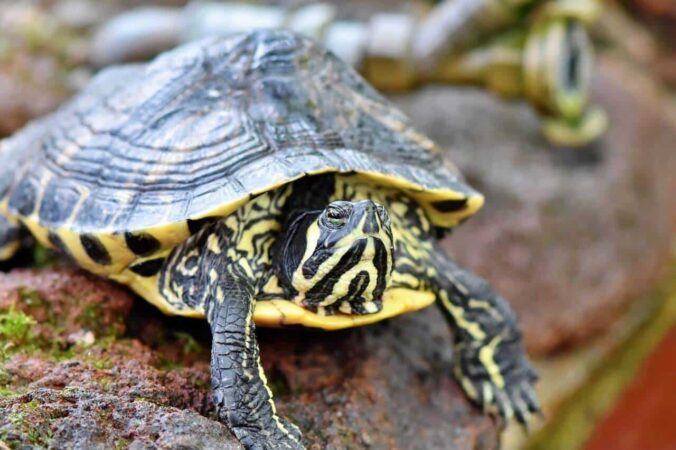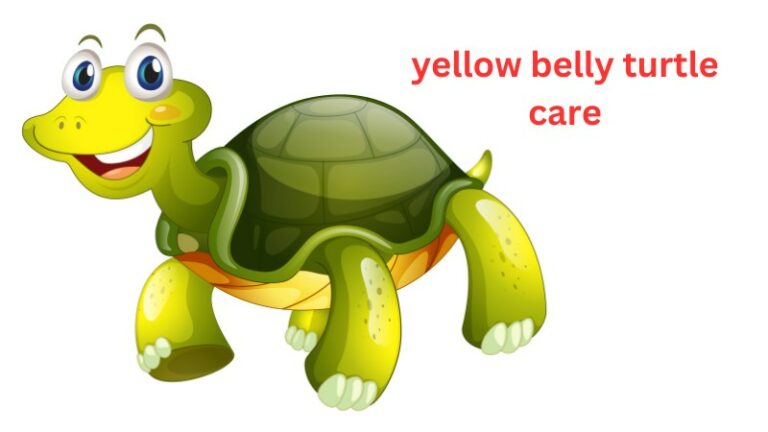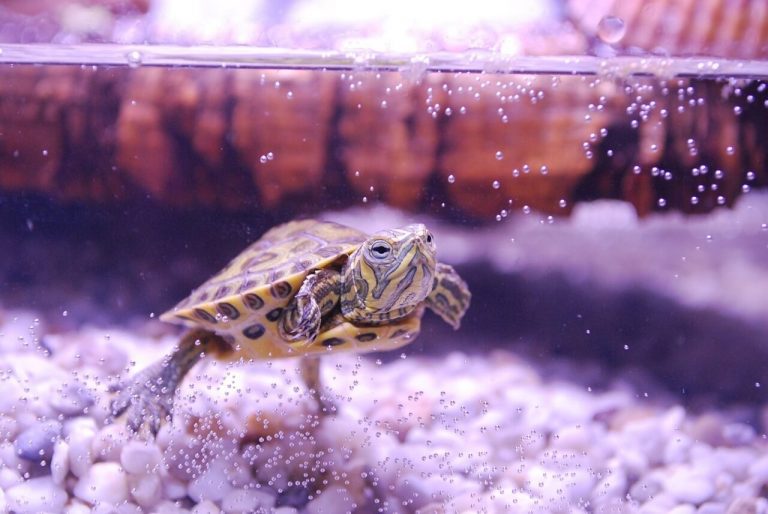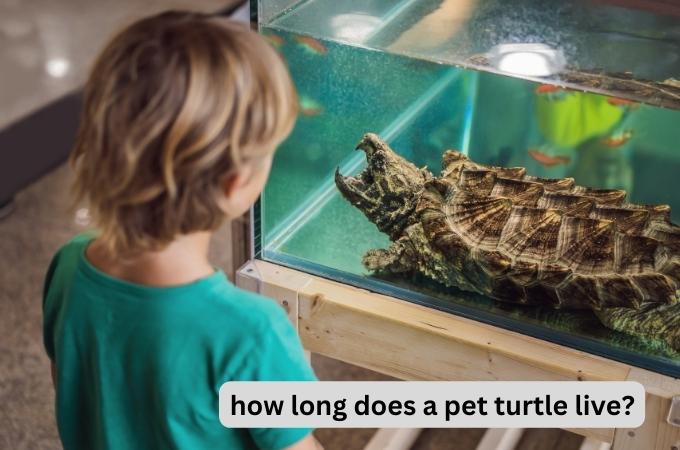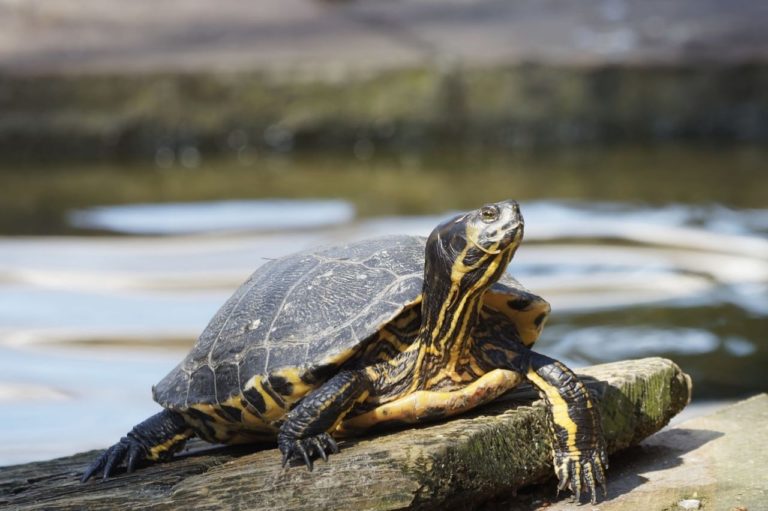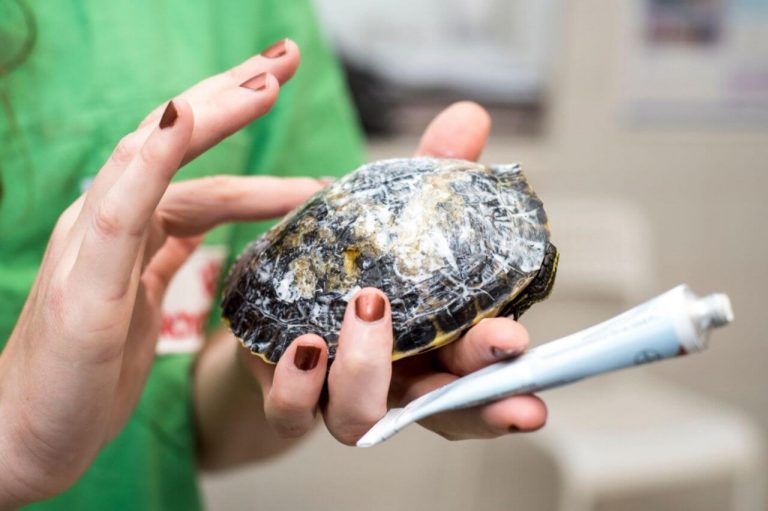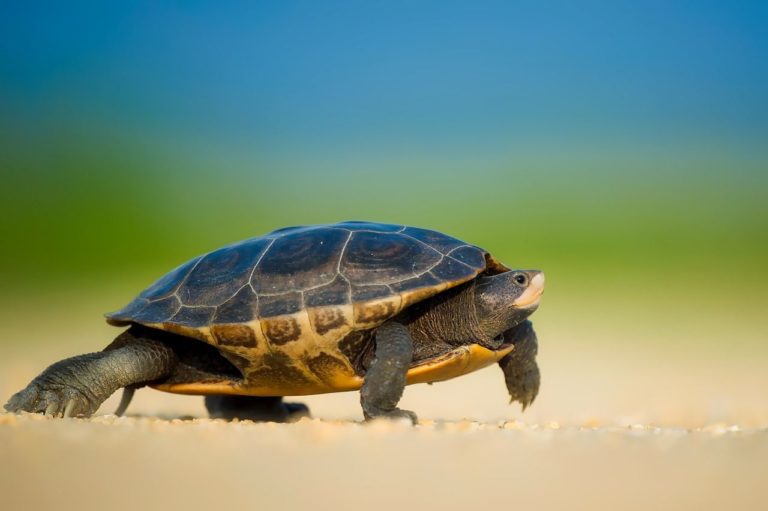Top Guide of Baby Yellow Belly Turtle Care | Turtle Care Tips
Today we discuss Baby Yellow Belly Turtle Care. Behold the enigmatic realm of the Yellow-bellied slider, a distinguished subspecies of the aquatic turtle clan, an illustrious creature that tantalizes the visual senses and beckons to be an exquisite addition to the grandiose spectacle that is your pet aquarium.
Picture this, a creature adorned in a kaleidoscope of hues, effortlessly bewitching any beholder, and to add a cherry atop this already captivating confection, it requires but a modicum of care, making it an irrefutably sought-after breed in the global pet turtle pantheon.
[amazon box=”B00BAVWJBG” grid=”1″ price=”none”]
An Overview of Yellow-bellied Slider
Before we delve into the care of yellow-belly bay turtles, it’s helpful to familiarize ourselves with their natural habitat, colors, and general information. This knowledge will make it easier to provide proper care with less effort. Here’s a brief overview:
- Close relative: Red-eared slider
- Native range: Virginia to Alabama
- Size: Approximately 5-12 inches
- Lifespan: 20-40 years
- Coloration: Yellow stripes on the legs and an olive-to-brown carapace.
Baby Yellow Belly Turtle Care Tips:
Taking care of a newly born baby yellow turtle is convenient. You need not be a specialist in turtle care for this purpose. The essential tips to take care of the yellow-bellied slider are the following ones.
Proper Housing
Yellow turtles are aquatic and spend most of their life underwater. To accommodate them, the turtle tank should have enough water for the babies to swim comfortably.
Avoid using a leaky or warping container. Since yellow turtles can grow up to 12 inches, a housing of at least 120mmX300mm with sufficient swimming space is necessary.
The tank should hold at least 75 gallons of water. Additionally, provide a basking area for the baby turtle and include a ramp or dock to help them easily transition from water to land.
[amazon box=”0764141910″ grid=”1″ price=”none”]
Proper Heat Management
Since yellow-bellied turtles are cold-blooded species, heat management plays a crucial role in their overall survival rate. It is imperative to ensure that the turtle tank or container maintains the proper heat levels.
During the daytime, baby turtles tend to emerge from the water and seek out a dry area to bask. This basking behavior is essential for them to absorb the necessary UVA and UVB lights, which are vital for their well-being and to prevent any diseases related to Vitamin D deficiency.
It is important to note that a lack of Vitamin D, especially D3, can hinder the proper growth of bones in yellow turtle babies, leading to a significant reduction in their lifespan. Therefore, creating a suitable basking area for these baby turtles is paramount. This area must fulfill two requirements:
- The basking area should receive ample sunlight to provide the necessary UVA and UVB lights.
- The temperature in the basking area needs to be maintained at around 80°F.
During the winter months, when the temperature drops near or below freezing, it becomes crucial to arrange external lights to keep the housing warm. Failure to do so can put the baby turtles at risk of developing unnecessary sicknesses. To address this issue, the following light sources can be used:
- A 100w or 60w basking light can be employed, depending on the surrounding temperature.
- Additionally, a UV light with a 12% intensity should be utilized.
However, if you prefer not to use two separate lights, an alternative option is to purchase a Mercury Vapour Bulb that can fulfill both light requirements simultaneously.
[amazon box=”B006VZOBZ8″ grid=”1″ price=”none”]
Maintaining The Water Parameters
When it comes to the care of yellow baby turtles, it is essential to prioritize their time spent in the water over their basking area. Therefore, before placing the baby turtle in the tank, it is crucial to ensure that the tank water is in the right condition. The first step in achieving this is to maintain the tank water temperature between 75°F to 80°F.
To achieve the desired temperature, you can opt for regular lighting in the turtle tank, such as a 60-watt or 100-watt light. This level of lighting should be sufficient to create an optimal environment and maintain the ideal temperature for the baby turtle.
In addition to temperature control, it is vital to keep the tank water clean and free from chlorine. Chlorine can be harmful not only to turtles but also to any fish or other species living in the water. To achieve this, it is recommended to install a filter in the tank that can effectively remove any debris and keep the water chlorine-free.
A canister filter that supports mechanical, chemical, and biological filtration is highly recommended for this purpose. This type of filter is necessary because baby turtles often consume high-protein food, which can quickly lead to dirty water.
If the water becomes dirty and becomes filled with algae and fungus, it can pose various health issues for the yellow baby turtles. Therefore, it is crucial to be vigilant and take appropriate measures to ensure the cleanliness and well-being of these adorable creatures.
Proper Diet
Yellow-bellied slider turtles are mostly omnivorous, according to turtle owners and experts. This means they have a wide variety of foods they can eat, including both animals and plants.
When baby turtles hatch and during their juvenile period, they should be fed twice a day. As they grow, they will require less food. Once they reach adulthood, it is recommended to feed them once a day and gradually reduce it to three times a week.
Baby yellow turtles readily accept brown and black crickets as well as shrimps and locusts to meet their protein needs. For vegetables, cabbage, carrot, and other green vegetables are recommended.
Feeding the baby turtles in the basking area can help keep the tank water clean with minimal effort.
[amazon box=”1517152860″ grid=”1″ price=”none”]
Conclusion
We recommend the bellied slider as the best option for you. However, it is important to understand how to properly care for a baby yellow belly turtle and set up the tank conditions accordingly for its optimal growth.
Fortunately, taking care of a baby yellow turtle is not difficult at all. Once you have a filter and a suitable heating source for the tank, the rest of the care instructions are easy to follow. Here is a brief summary of the essential care tips:
- The container or housing should be approximately 120X300mm in size.
- The water temperature should be maintained between 75°F and 80°F.
- Use a UV light with 12% intensity and natural brightness, with a capacity of either 60 or 100 watts.
- Focus on a diet that includes protein and vegetables.
